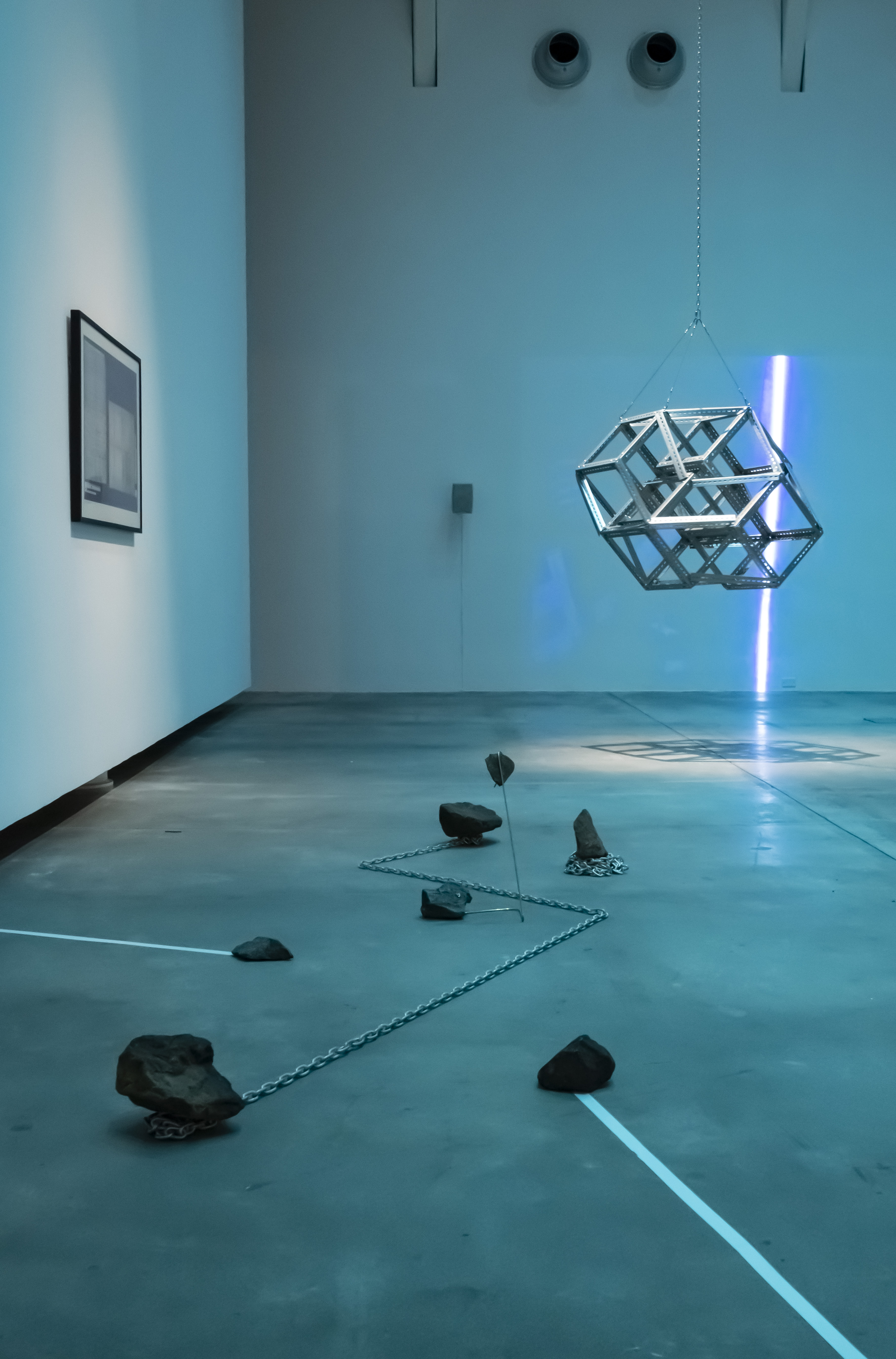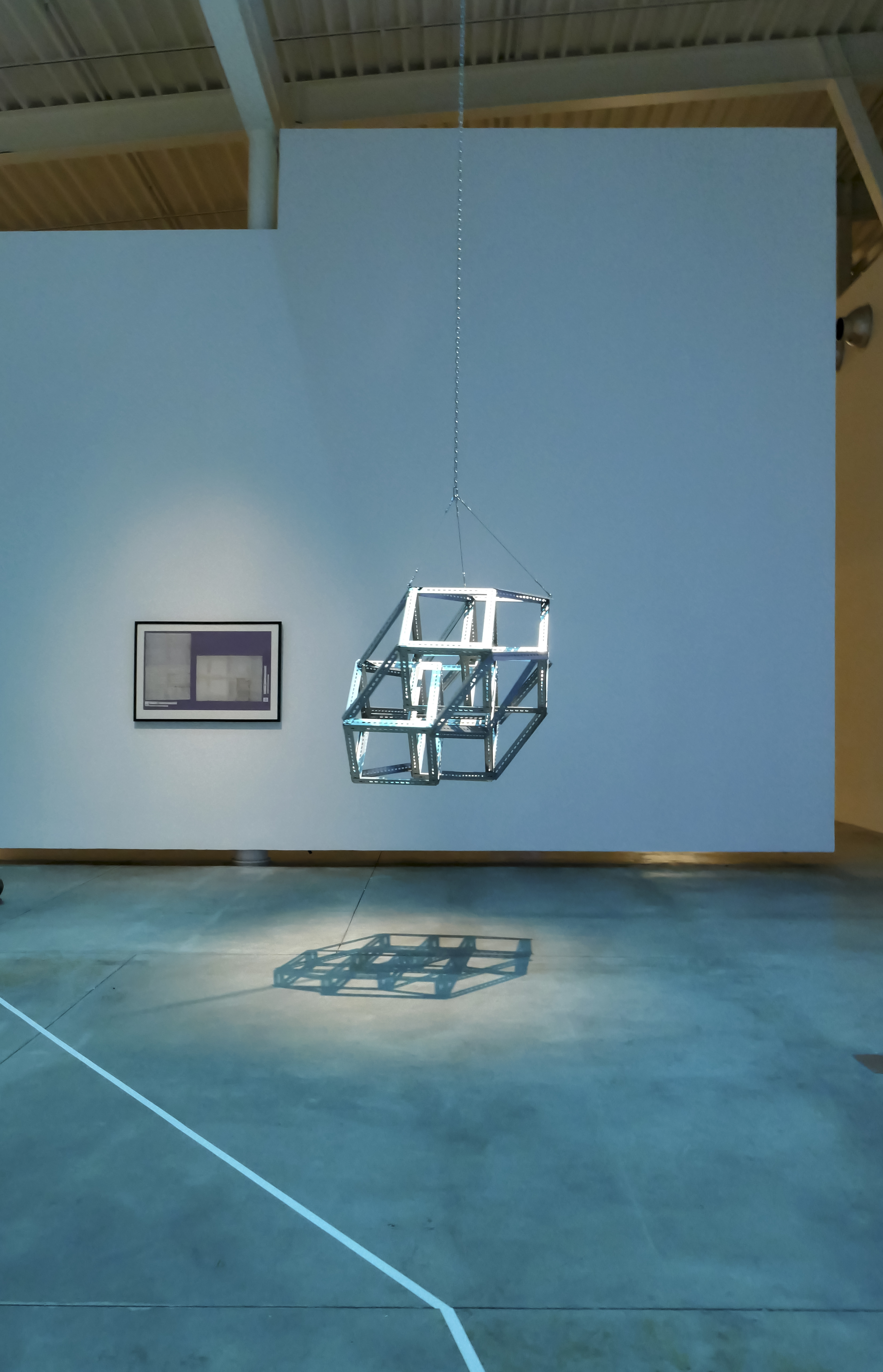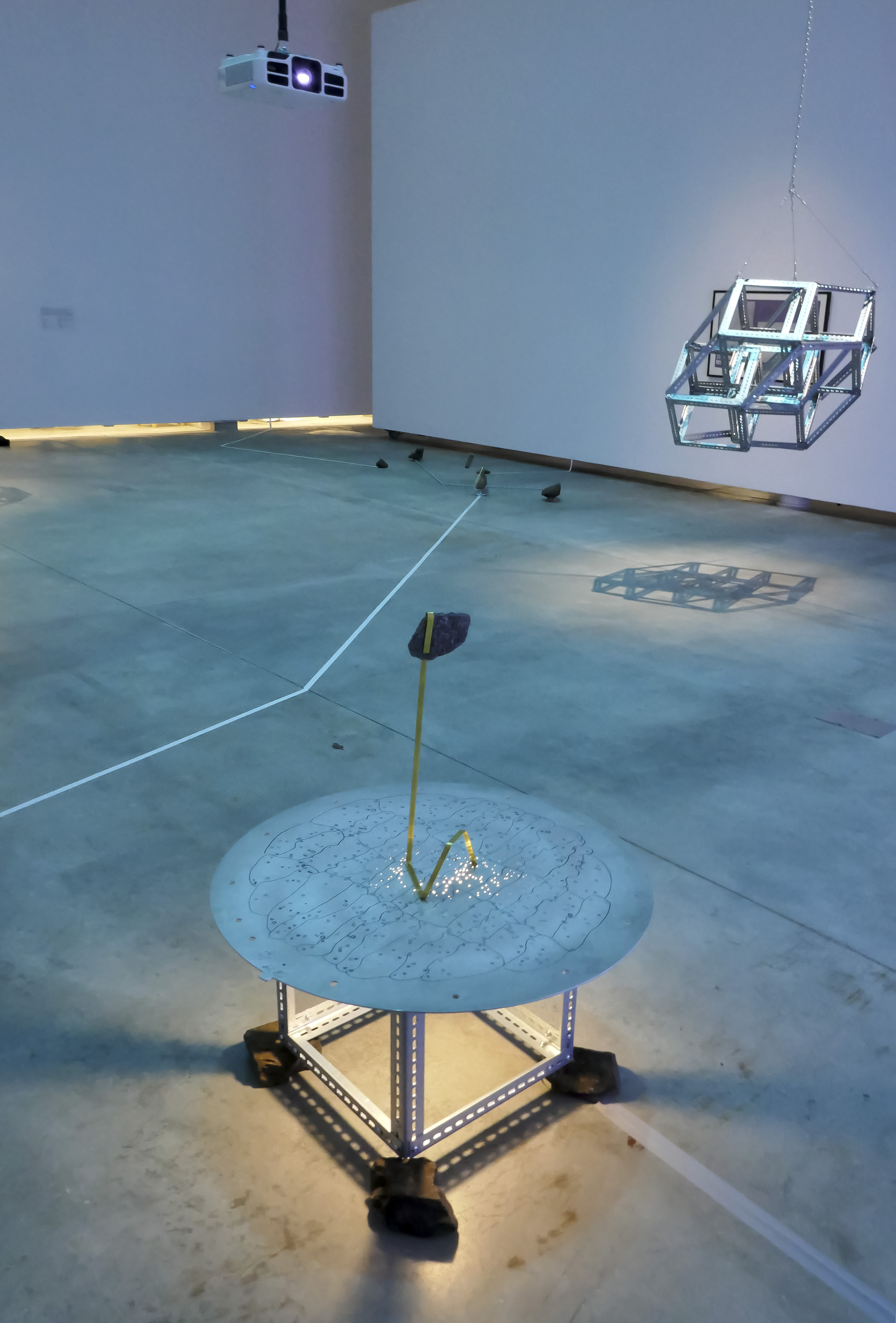n-Land
in DRIFT: Art and Dark Matter
a touring exhibition and residency project by AGNESImages: The Belkin Art Gallery
University of British Columbia, Vancouver, 2021.
'n-Land: the holographic (principle)' analyses and situates physics methods, assemblages, sites, and practices in eco-social, historical, and colonial contexts to situate settler physics in its present cultural and cosmological setting. The project is based on research and fieldwork as part of the Drift Artist Residency and touring Exhibition hosted by the Agnes Etherington Art Centre, the McDonald Institute (each at Queens University, Kingston, Ontario), and the 2015 physics Nobel prize winning SNOlab (situated 2kms underground in Sudbury, Ontario). n-Land was also kindly supported by the Stonecroft Artist Residency.
n-Land un/folds some of the complex dimensions of the 'landscape-laboratory': a neutrino and dark matter lab that is housed deep inside a century old nickel mine, each residing inside the second oldest and largest comet impact crater on Earth (the 1.85 billion year old Sudbury Basin Igneous Complex). All of these components are also within the territory of the Robinson Huron Treaty (signed 1850 with 17 Ojibwa leaders and the 'Crown') on the North shores of Lake Huron, Ontario, Canada. The RHT is part of a significant, ongoing, precedent setting federal annuities case in the settler society of ‘Canada’. The governements, as often occurs, have not lived up to their own Treaty, now owing the Ojibwe some many Billions of dollars in back pay.
With the voice of physicist Miriam Diamond and inspired by the work of Karen Barad, Leanne Betasamosake Simpson, and Denise Ferreira da Silva.
Thoms borrows the imagery, materials, and strategies of physics, composing them in an assemblage to probe the (eco)logical ethics of our time. For example, borrowing a strategy from theoretical physicists, he manipulates dimensions throughout his installation to reveal overlooked relationships that make the production of new cosmological knowledge possible. This is made explicit in his metal "polytope" higher dimensional sculptures titled 'The Bulk: Frameworks' which Thoms considers as ‘shadows’ of a 7 dimensional artefact. The provocative flattening and layering of complex dimensional objects continues in his 'Isomorphis' prints, in which he layers flattened 3D scans of SNOLAB experiments to expose gaps and hidden strata within scientific classification methodologies.
Thoms’ installation suggests a multi-dimensional view of the SNOLAB site which he refers to as ‘holographic,’ reading context and agency through vast cosmic and geological time scales. The piece reflects on intra-connected components of landscape-laboratory: the comet that hit the location 1.85 billion years ago, and the resulting emergence of copper and nickel deposits within its rock; how the land is both a major mining site and the object of debated government treaties with local Anishanaabe people; and how kilometres of rock technologically isolates SNOLAB from the thick interference of surface radiation so that experiments can search for rare cosmic particles.
A link to the opening performance discussion with Denise Ferreira da Silva: https://www.youtube.com/watch?v=ilpWxzYubwY
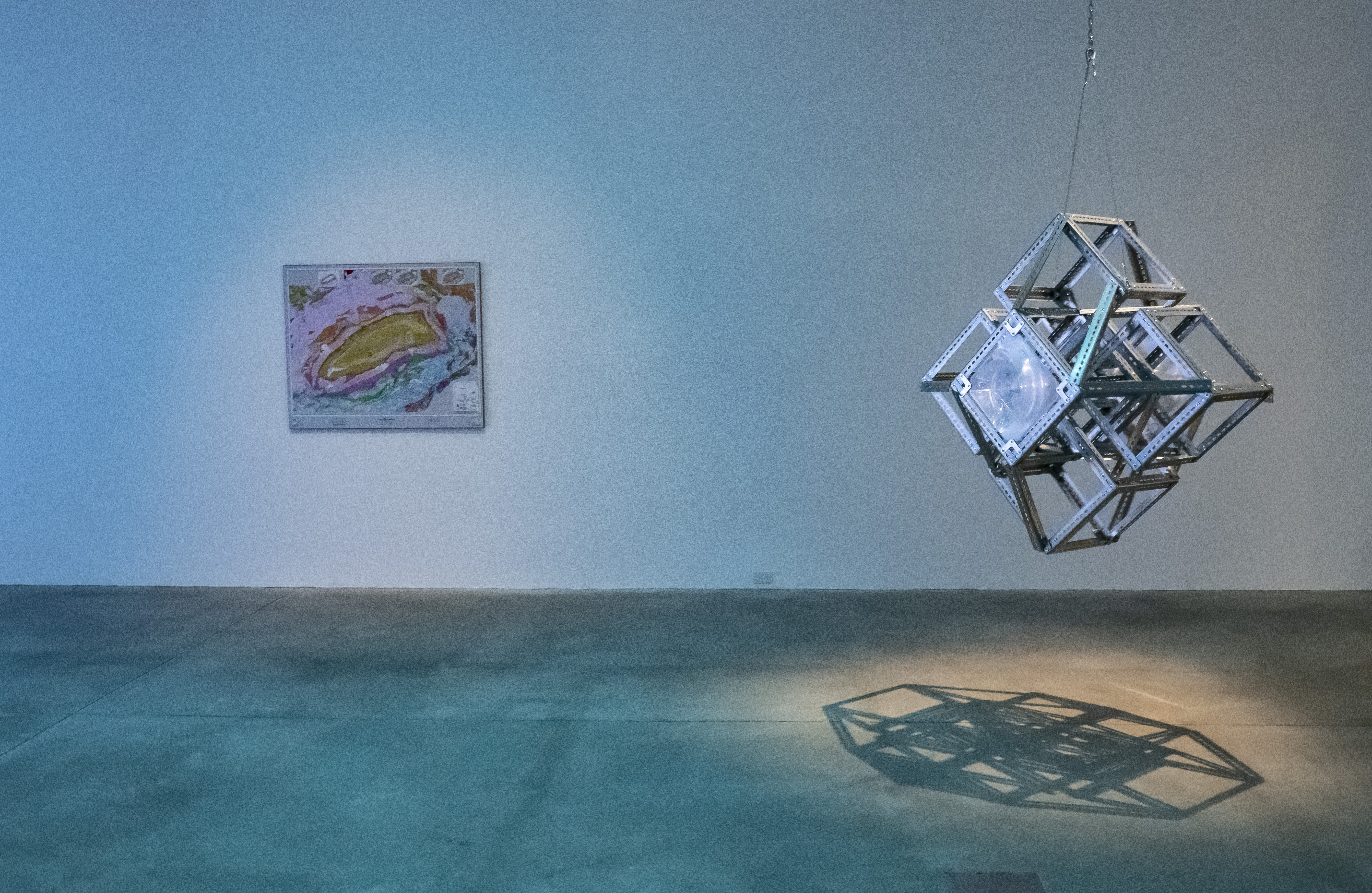
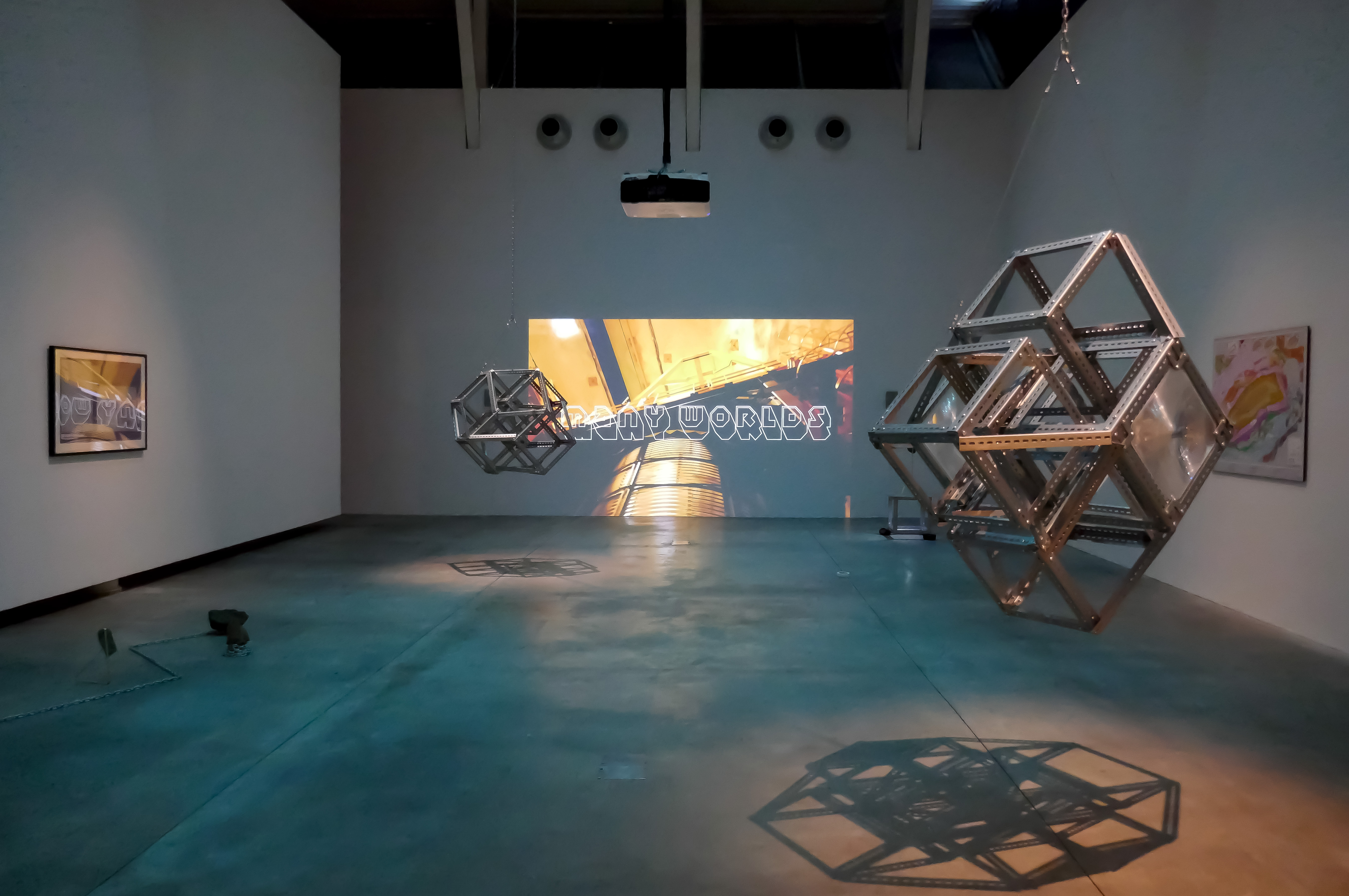
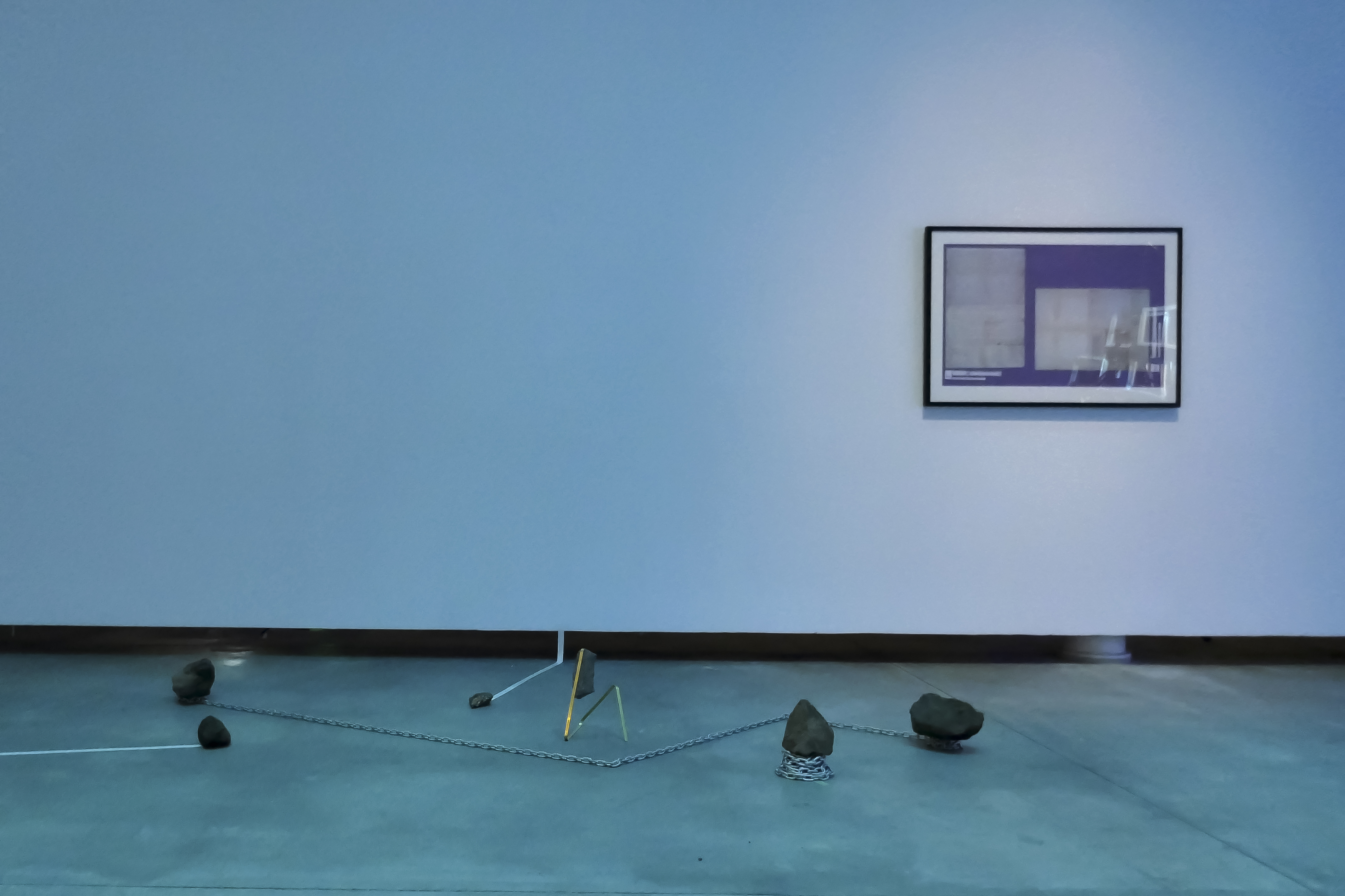

Drift: Art and Dark Matter is an artist residency and touring exhibition project developed with the Agnes Etherington Art Centre, the Arthur B. McDonald Canadian Astroparticle Physics Research Institute, and the 2015 Nobel prize winning SNOLAB. For this project Thoms along with artists Nadia Lichtig, Josèfa Ntjam, and Anne Riley were invited to make new work while engaging with scientists, theorists and engineers contributing to the search for dark matter at the McDonald Institute and at SNOLAB’s underground facility in Sudbury, located two kilometers below the Earth’s surface.
